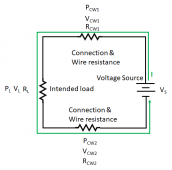Sssoooo, back towards the original topic. I would like to say that a sticky for video ideas would be nice but with the tendency of threads getting derailed that probably wouldn't work.
In light of that, video idea (or maybe a sticky?):
Things Everyone Just Knows (But Nobody Tells You):
Rules of thumb like
Inverters and panel output should be calculated at 85% efficiency
fuses and breakers are Amps * 1.25%,
sunlight hours are NOT daylight hours,
shoot for 3 days capacity on your batteries and so on
weather and location make all the difference
DC charging amps are NOT the same as AC charging amps from your generator
I love the beginner videos you put out
@Will Prowse because there is a wide range of skill and experience levels and as more and more people get into solar it's nice to see videos to help the new folks get at least the basics without having to dig and search for information that they don't know they don't know. I was playing with solar stuff in Western WA where solar is pretty much a joke for years before I ever found your videos (I think I was on my 2nd or 3rd attempt about the time you got your house) and at the time information wasn't really out there to learn from and trial-and-error WERE the only way to learn. The paywall to get started at the time was also very hard to deal with as the equipment available started at MidNite Solar and Victron and went up from there for the most part and if you could get panels for less than $2/w that was a helluva deal. Nowadays things are so much cheaper and a bit easier to get past that paywall and still have a usable and reliable system.
Now that technology has changed quite a bit since your original videos came out it's nice to see some beginner friendly videos again. Keep putting those out there please! ?




